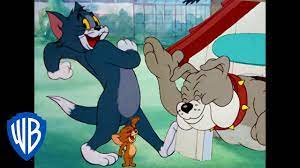The underrepresentation of women in film has been a topic of discussion for decades. Women are often underrepresented both in front of and behind the camera in Hollywood. This topic could discuss the impact this has on the industry as a whole and what can be done to increase representation. In this blog post, we will explore the issue of the underrepresentation of women in film and its impact on the industry, as well as potential solutions for increasing representation.
1. The
underrepresentation of women in front of the camera
This section will focus on the lack of female representation in leading roles in Hollywood movies. It will provide statistics and data to support the claim that women are underrepresented in front of the camera. The discussion will also delve into how female characters are portrayed in movies, with an emphasis on the gender stereotypes that are perpetuated in Hollywood films. The section will highlight the impact that this has on the audience and society as a whole, including how it reinforces harmful stereotypes and contributes to gender inequality.
2. The underrepresentation of women behind the camera
In this section, the focus will shift to the lack of female
representation behind the camera, such as directors, writers, and producers.
The discussion will cover the statistics and data that show the low percentage
of women in these positions and the challenges that they face. This section
will also highlight the impact that underrepresentation has on the industry as
a whole, including the types of films that are produced and the stories that
are told.
3. The impact of underrepresentation on the industry
This section will explore the financial impact of
underrepresentation, highlighting how diversity can lead to better financial
outcomes. The discussion will also cover the perpetuation of gender stereotypes
in film and how this affects the industry's ability to attract and retain
talent. This section will also focus on the impact that underrepresentation has
on female filmmakers and the lack of opportunities for them to succeed.
4. Solutions
for increasing representation
This section will explore the different solutions and
initiatives that have been proposed to increase female representation in film.
It will cover the importance of equal pay and funding for female filmmakers, as
well as the role of film festivals and award shows in promoting diversity. This
section will also highlight the importance of education and training programs
to address the systemic barriers that women face in the film industry.
The conclusion will provide a summary of the key points discussed in the post
and reiterate the importance of increasing the representation of women in film. It
will emphasize the need for Hollywood to take action and work towards a more
inclusive and equitable industry. The conclusion will also provide final
thoughts on the issue and potential solutions to ensure that progress is made.
what are the negative effects of feminism in the film industry?
It is important to note that feminism, which aims for gender
equality, does not have negative effects on the film industry. However, some
individuals or groups may perceive it as negative due to various reasons, such
as a lack of understanding or discomfort with changes to the industry's status
quo. In fact, feminism in the film industry has brought about positive changes
and has encouraged the industry to become more inclusive and diverse.
Here are some common misconceptions about the negative
effects of feminism in the film industry, and why they are inaccurate:
1. "Feminism is taking over the film industry and making it too politically correct."
Some individuals may argue that feminism is forcing the industry to cater to a certain political agenda or narrative, resulting in a lack of creative freedom. However, feminism in the film industry simply aims to create a more equal and diverse representation of voices and perspectives. It encourages filmmakers to explore different perspectives and experiences, leading to more creative and interesting storytelling.
2. "Feminism is promoting reverse discrimination against men in the industry."
This is another common misconception that suggests that feminism seeks to discriminate against men in favour of women. However, feminism in the film industry is about promoting equal opportunities for both men and women. It does not seek to reverse the discrimination against women but rather to end it altogether so that everyone has an equal opportunity to succeed in the industry.
3. "Feminism is causing films to be less profitable and successful."
This is a common myth that suggests that promoting gender equality in the film industry is not financially viable. However, there is evidence to suggest that increasing diversity and representation in the industry can lead to higher profits and greater success. For example, films that are more inclusive and diverse are more likely to attract a wider audience and achieve higher ratings.
































































